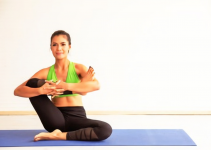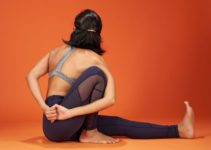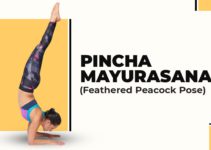- Why flexibility
- Yoga & flexibility
- Best yoga poses
- Down dog
- Pyramid pose
- Crescent lunge
- Half lord of fishes pose
- Cow face pose
- Hand to big toe
- Bow pose
- Dancer pose
- Wide-angle forward bend
- Cobra pose
- Reclining pigeon

Flexibility is one of the key attractions every beginner yogi wants! Indeed, it’s found in a 2016 study, the popular reason to start yoga in 61 percent of Americans was flexibility only.
With time and aging, lack of flexibility is the most common issue that everyone faces. However, turning to yoga for flexibility has shown proven results in a research study conducted in 2009.
To get a better understanding, let’s begin with the importance of flexibility and proceed further to the specific yoga poses for flexibility targeting the tight hips, hamstrings, calves, shoulders, and back.
Why flexibility is so important (On and off the yoga mat)?
Flexibility, not only for exercising or yoga sessions but also for performing daily activities with efficiency and ease is inevitable. Some major benefits of achieving a greater range of flexibility include:
1. Prevents Injury
It is proven in a study that increased flexibility reduces the risk of getting hurt or injured. A more flexible body can withstand greater physical stress, hence, is less prone to getting hurt.
2. Improves posture
Physical workout especially yoga for flexibility enhances body alignment and improves body balance. It aids in lengthening the tight muscles, strengthening the core, and neutralizing the pelvis and spine, thereby improving overall posture.
3. Better blood circulation
Being flexible puts off the pressure from the joints and removes all the tightness, which facilitates enhanced blood flow to all the cells. It also helps in removing body toxins and eventually increases the oxygenation of the blood and enhances energy levels.
4. Alleviates pain
Flexible muscles experience less tension and pressure, which results in reducing pain and muscle cramps. The loose and supple muscles have enhanced capacity to bear strain and tear, thus enhancing flexibility acts as a natural painkiller.
5. Uplifts state of mind
Regular stretching and flexibility training brings in relaxation physically as well as psychologically. This accompanying relaxation brings positivity and benefits mental health.
6. Enhances range of motion
Muscle mobility and flexibility are directly proportional to each other. Gaining muscle flexibility tones and conditions muscles, joints, and ligaments. It enhances the efficiency of muscles to move, thereby, boosting the natural physical performance.
How Yoga Improves Flexibility?
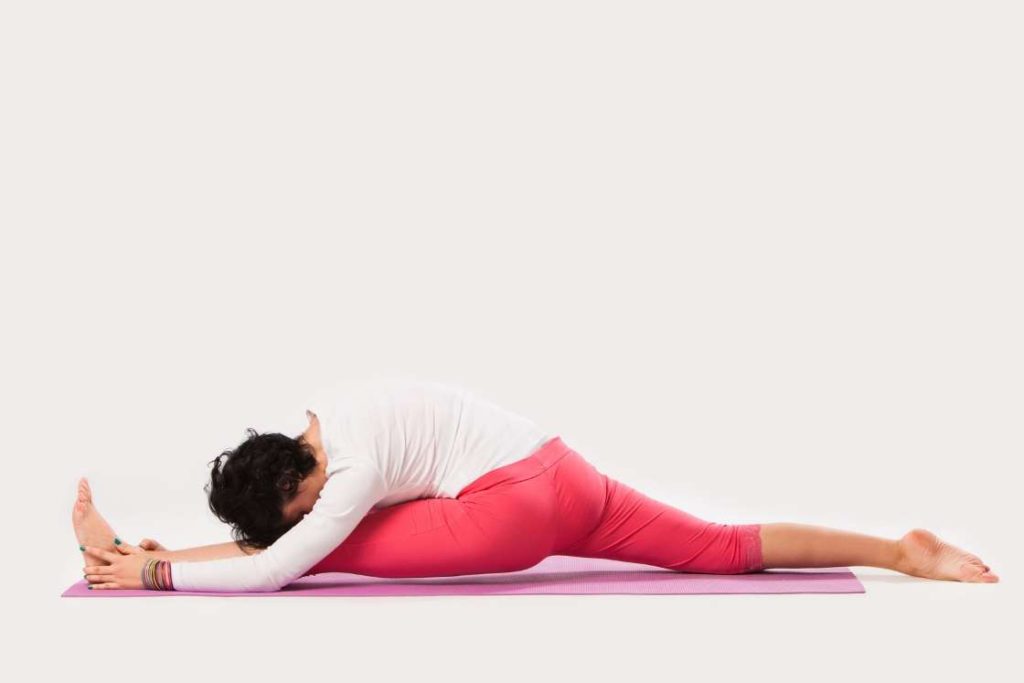
Yoga poses build the stamina and endurance of the practitioner. It’s considered more beneficial than any other form of exercise for the entire body because it acts as a mind-body workout.
Yoga includes stretching poses that require as well as builds strength and flexibility. However, it is not all about the poses but also incorporates deep breathing (pranayama), meditation, or relaxation.
Yoga poses improve flexibility by working on 3 key elements – Alignment, Attention, and Awareness.
- Alignment is about how exactly the muscle is stretched or how the different areas of the body are placed while practicing a pose. The proper alignment of the body is crucial to get the desired flexibility results by avoiding the risk of getting hurt.
- Attention serves as a friend to you while practicing yoga poses for flexibility or any other benefits. With full attention and concentration, you can feel any pose to the fullest and can also develop awareness to know your limits and potentials.
- Awareness is the third pillar of yoga’s mechanism to improve flexibility. It brings mindfulness by engaging the body and mind to the present by bringing the focus in towards the pose and breathing patterns.
Best Yoga Poses For Flexibility
Yoga for increasing flexibility includes poses that target stretching specific muscles and loosen the tight areas of the body.
There is a supporting study that proves the impact of yoga practices on restoring natural flexibility. Here, 9 young females participated in a regular hatha yoga session which was held twice a week for 5-months.
After practicing hatha yoga targeting the joint mobility as well as stretching shortened skeletal muscles, it was concluded that hatha yoga style is the best possible practice to achieve flexibility in the shortest time.
Hence, with the consistent practice of hatha yoga poses, the range of mobility of muscles and joints increases which eventually improves the overall flexibility.
If you are willing to move out of your comfort zone to learn and practice body stretching yoga, then, going to a yoga class offering Hatha, Vinyasa, or Yin styles are recommended.
Beginners can try these 11 yoga poses for flexibility:
1. Downward-facing Dog Pose (Adho Mukha Svanasana)
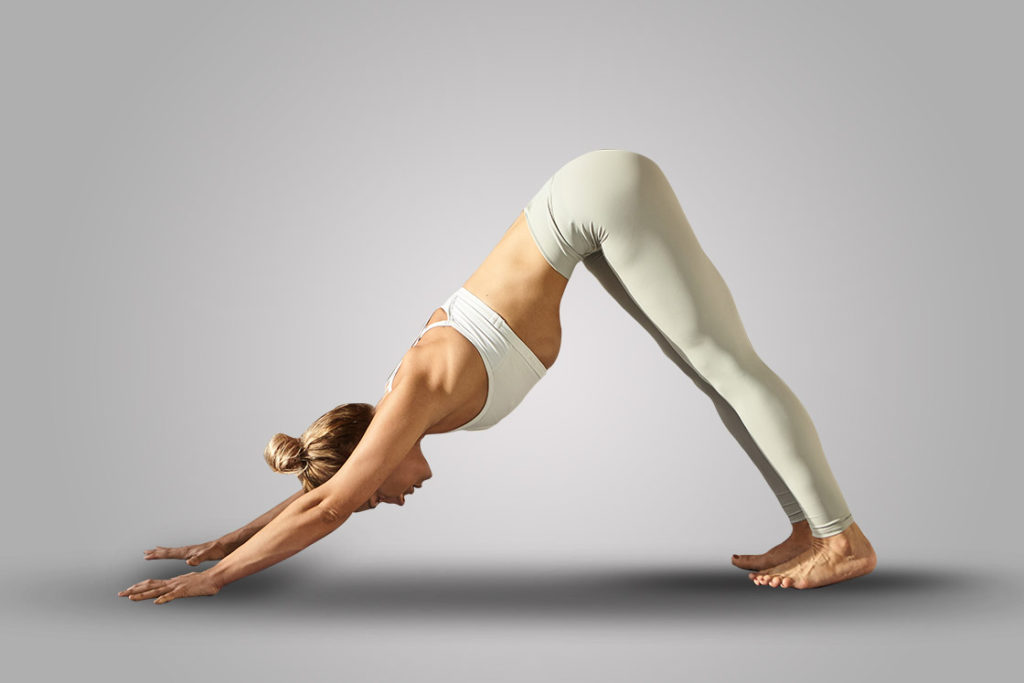
All the styles of yoga including Iyengar, Bikram, Vinyasa, and Ashtanga involves down dog in their routine practice. It is the basic posture that stretches every muscle group.
Downward dog pose is the best choice if you feel stiffness in the back of your legs from glutes to the hamstrings and calves. It tones joints, strengthens the upper and lower body, improves blood flow, and provides all the benefits of inversion poses. Hence, by stretching and strengthening almost every muscle, down-dog is the most widely practiced yoga pose for flexibility and strength.
Instructions
- Assume the table-top position by placing the knees slight behind the hips.
- Curl your toes under and lift the knees off the floor.
- Pressing the palms on the floor push back straightening the legs and arms.
- Pedal your feet one at a time and then try to bring the heels to the floor.
- Hold this inverted V-position for 5-10 breaths.
2. Pyramid Pose (Parsvottanasana)
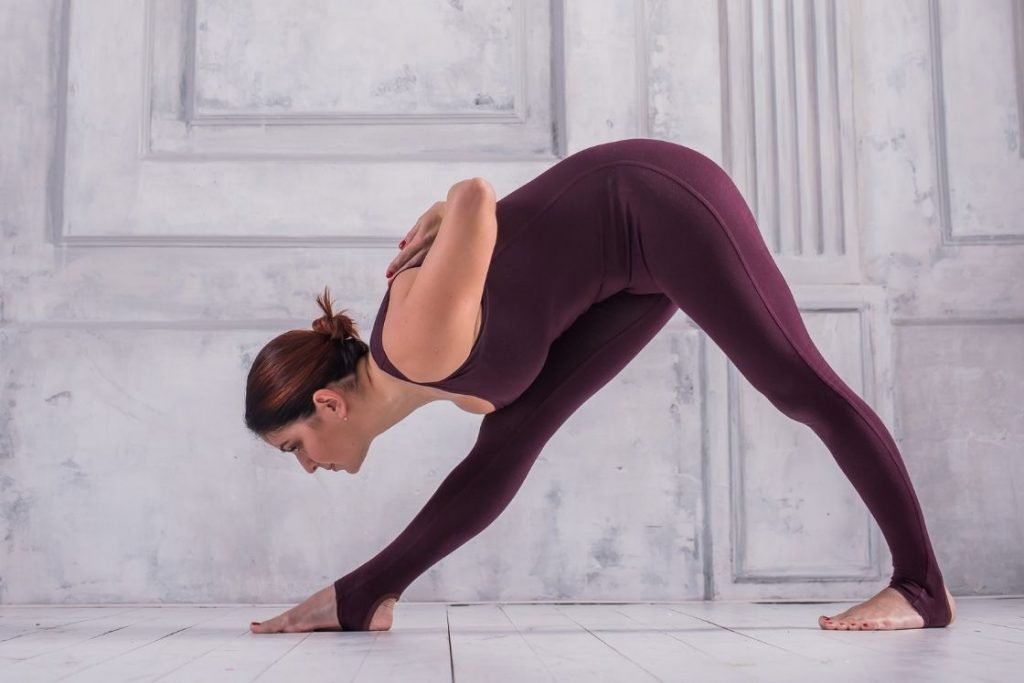
Pyramid pose is an intense side stretch performed bending forward which signifies that it works on stretching the spine, hips, and legs.
It also opens up hamstring muscles and shoulder blades, thereby building balance and coordination.
Instructions
- Stand separating the feet 3-4ft apart aligning the heels.
- Rotate the right foot 90° outwards and the left foot at 45° towards the right. Also, rotate the upper body towards the right.
- Stretching the arms out rotate the shoulders externally taking the palms in reverse prayer pose.
- Opening the chest, bend forward bringing the chin towards the right shin and belly pressed against the right thigh.
- Stay there for 60 seconds relaxing the neck.
3. Crescent Lunge Pose (Anjaneyasana)
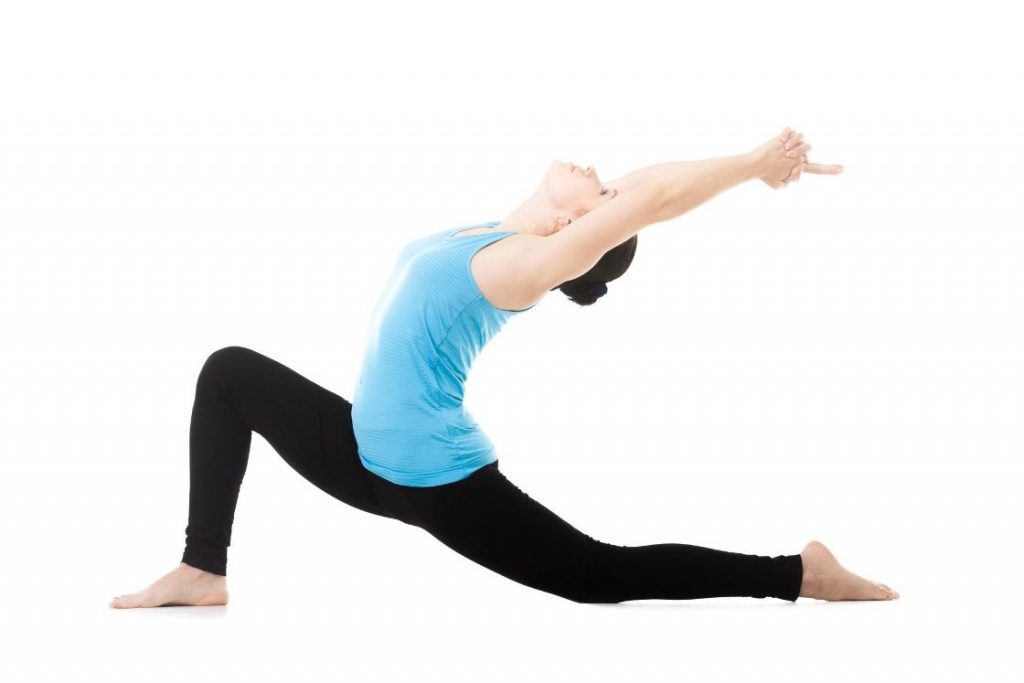
This pose is an opportunity to shift the focus towards lengthening the spine along with opening the hips. The back in the crescent lunge is indulged in a slight backbend engaging the core muscles.
It also stretches the arms, neck, chest, front of the leg, knees, and intercostal muscles. The dynamic nature of the crescent lunge pose stretching the body from toes to the fingertips tones the muscles and improves overall flexibility.
Instructions
- Begin with kneeling on the left knee and bending the right knee place the right foot on the floor in front of you.
- Lengthen your spine and torso raising the arms overhead and joining the palms.
- Arch the back slightly by gently pushing the right hip.
- Hold this pose for 30 seconds and then repeat switching the leg position.
4. Half Lord of the Fishes Pose (Ardha Matsyendrasana)
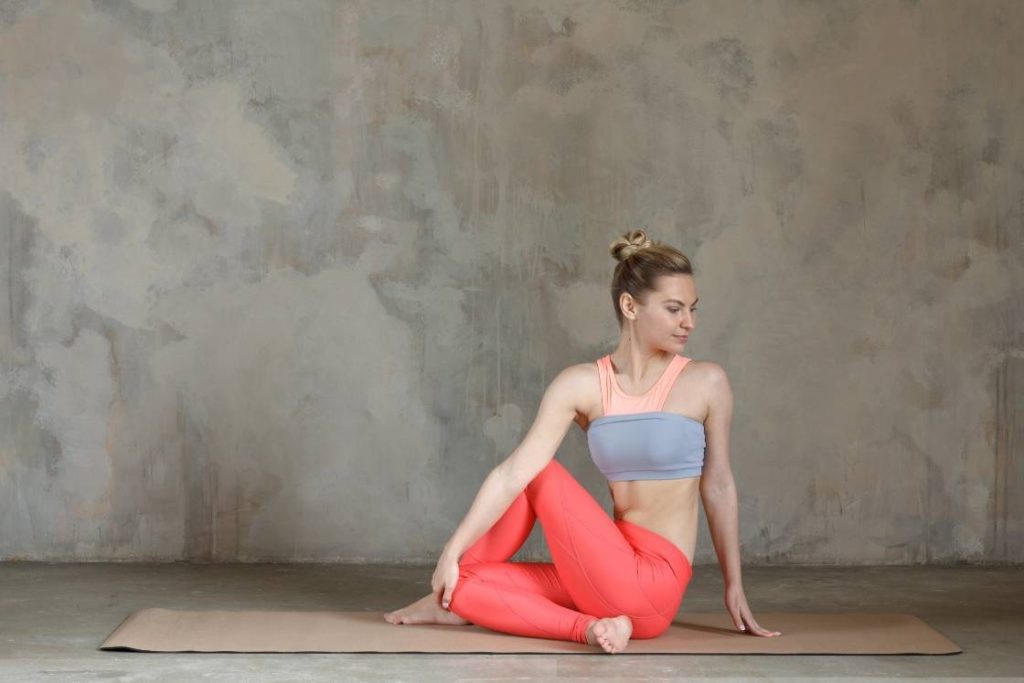
When it comes to yoga poses for flexibility, half lord of the fishes cannot be ignored. This is a twisting posture that actively stretches the upper body along with also improves the glutes flexibility passively.
This pose gives a lateral twist to the spine along with toning the ribcage and abdominal organs. This unusual laterally twisting pose is highly beneficial to become flexible.
Instructions
- Sit in a cross-legged pose keeping the right leg out.
- Lift your right foot to keep it outside the left knee raising the right knee.
- Keep your left foot closer to the right hip placing the outside of the left foot on the floor.
- Inhale raising both the arms and exhale while twisting towards the right placing the right hand behind you on the floor.
- Simultaneously, the left elbow comes to lie outside the right knee.
- Pressing the left foot on the floor gaze towards the right.
- Stay there for 5-10 breaths and then release to do same on the left side altering the legs position.
5. Cow Face Pose (Gomukhasana)
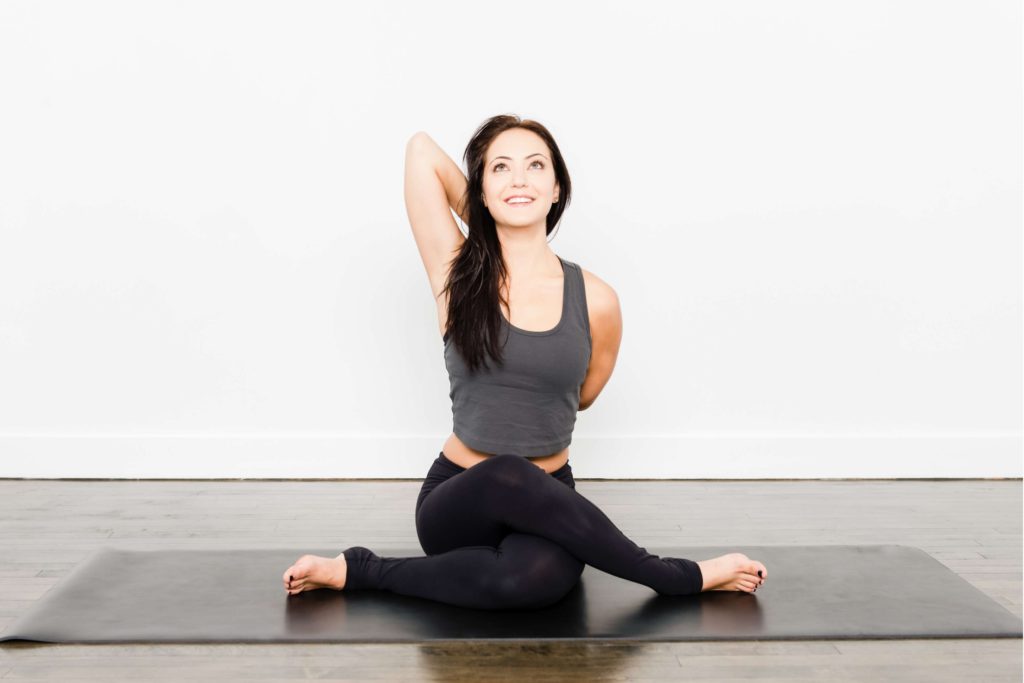
Cow face pose increase flexibility of neck, shoulders, arms, and hips muscles. The legs position holding this pose is also beneficial to stretch the thighs, knees, and feet.
Besides removing stiffness around the neck and shoulders, cow face pose opens the chest and stretches the triceps. Also, practiced for its massaging effects on the lower back and legs, thereby relieving sciatica.
Instructions
- Sit cross-legged stacking the right knee on top of the left such that the feet reaches the alternate buttocks.
- Raise your right arm and then bend the right elbow to place the right hand on the upper back.
- Take your left arm to the left and bending its elbow place the left hand on back clasping it with the right hand.
- Gently press your head onto your right arm keeping the chest open.
- Remain in this pose for at least 30 seconds then release switching the arm position.
6. Reclined hand to big toe pose (Supta Padangusthasana)
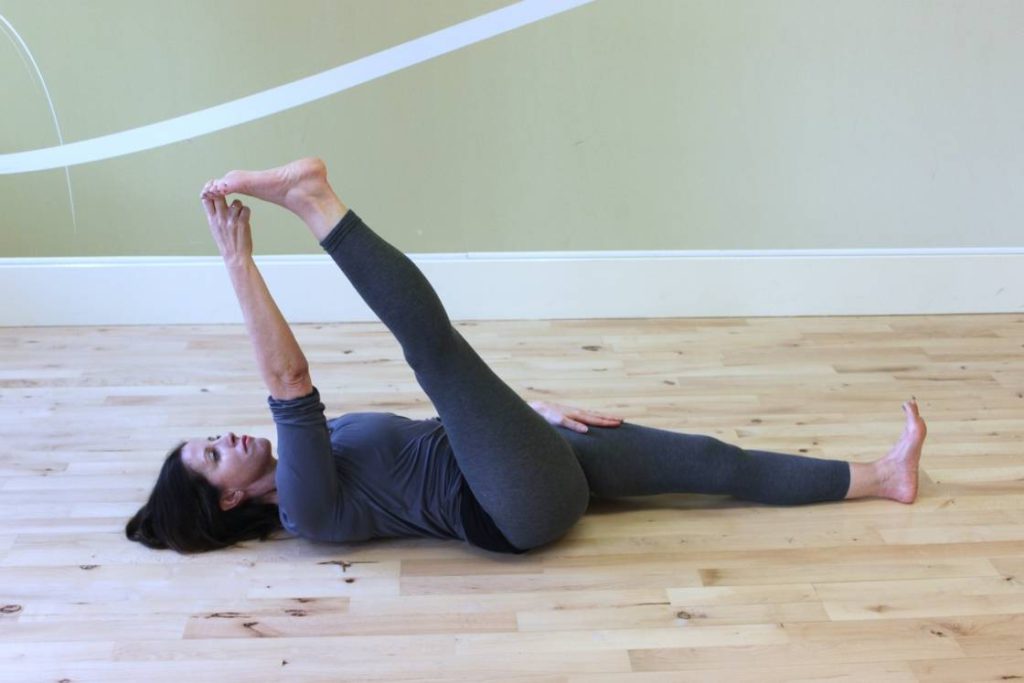
As the name suggests, it is performed lying on the back and reaching the big toe with a hand. The pose further deepens after holding the big toe by taking the respective leg to the side, and finally down to the floor.
Practicing this pose majorly improves the flexibility of groins, hips, hamstrings, and calves. Also, it strengthens the knees and works on back muscles.
Instructions
- Lie on your back keeping the spine, legs, and arms straight.
- Lift the right leg off the floor bringing its heel towards the sky.
- Bend the right leg to hold the right big toe with the right-hand wrapping the index and middle finger.
- Hold it for five breaths, then inhale and take the right leg to the right side bringing the foot to the floor.
- Keeping the head, shoulder, and left sitting bones to the floor.
- Use the strength of core and hips muscles to stay there for another five breaths.
- Then release and repeat it with the left leg.
7. Bow pose (Dhanurasana)
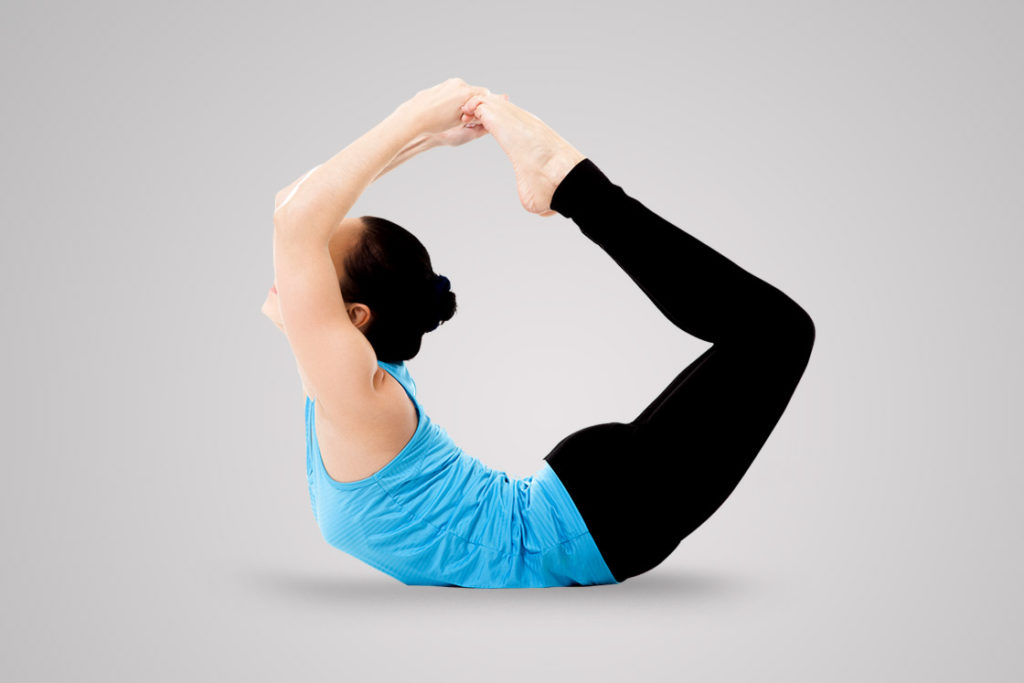
To enhance the flexibility of the back, the bow pose is best for beginners. It also stimulates those muscles that are often used while sitting and release their accumulated tension.
Besides these, it is practiced to expand the lungs, vertebrae, and hip flexors actively engaging the core muscles. Thus, this full-body stretching yoga asana makes the back, chest, glutes, and legs more flexible.
Instructions
- Begin lying on your belly keeping the arms by the sides.
- Bend your knees bringing the feet to your back and reach back extending your arms to grab the outside of your ankles.
- Lift the shoulders and chest off the floor to a comfortable range, and look forward taking long deep breaths.
- Hold the pose as such for 30 seconds. Release and repeat it for 1-2 times more.
8. Dancer pose (Natrajasana)
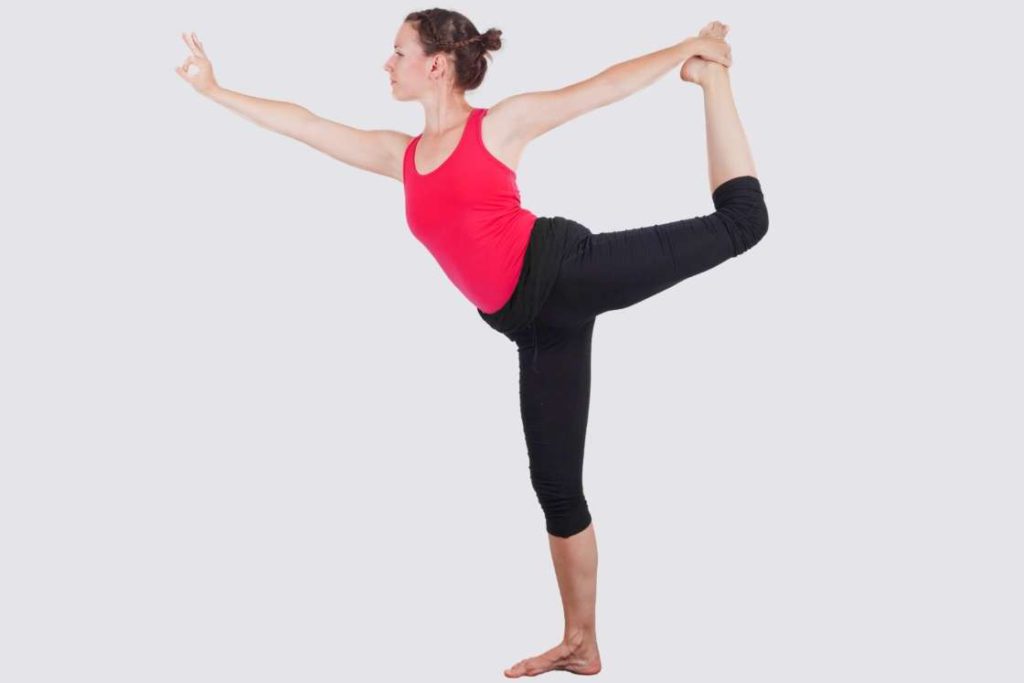
This one tops the list of advanced yoga poses for flexibility. It stretches the spine, shoulders, and hamstrings and improves overall body flexibility.
Finding balance to practice this pose is challenging in the beginning. However, once you get expertise holding King dancer pose, the posture, balance, and coordination are also enhanced along with suppleness of the body.
Instructions
- Begin standing in tadasana keeping the arms by the sides.
- Lift your right foot taking the right heel to the right buttock by bending the knee.
- Extend the right arm back to grasp the outside of the right foot or ankle.
- Holding the right foot move it upward as high as possible.
- Stretch the left arm in front of you lean slightly forward.
- Hold this pose for a couple of breaths and then repeat it switching the legs and arms position.
9. Wide-angle seated forward Bend (Upavistha Konasana)
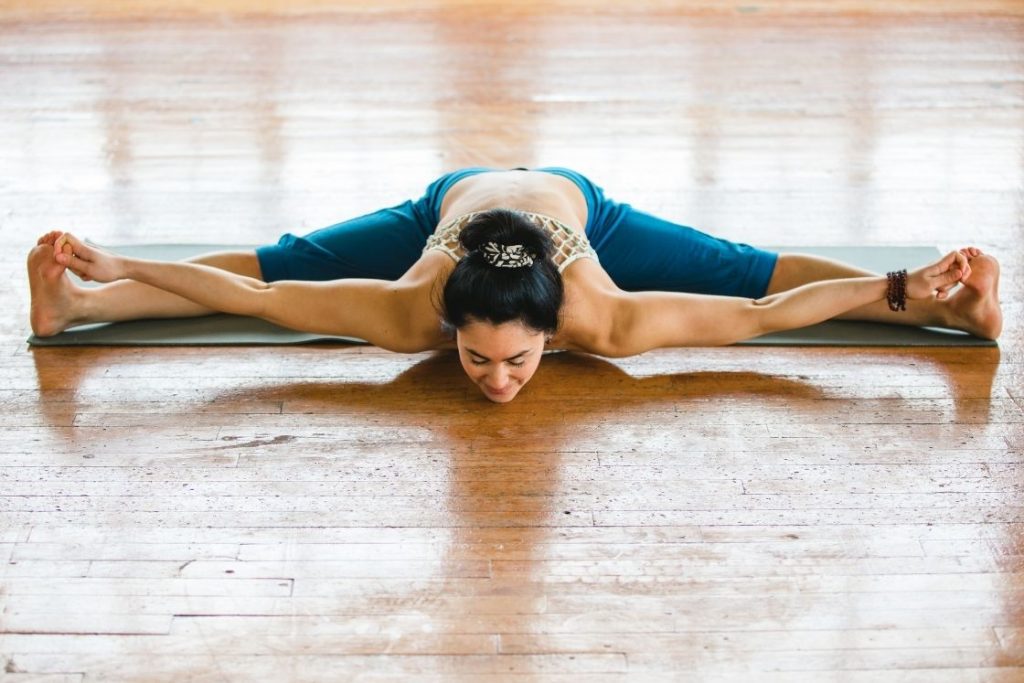
Wide-angle seated forward bend is a seated split pose that targets the inner thighs while opening the hips and lengthening the lower back.
Besides this, it stretches the legs, arms, chest, and entire back muscles which naturally makes it a suitable yoga pose for flexibility and strength.
Instructions
- Sit on the floor separating your legs as far as possible activating the arches.
- Maintaining the spinal integrity raise your arms overhead.
- Bend forward at your hips walking your hands forward on the floor until the forehead touches the floor.
- Stay in this pose with normal breathing for 1-2 minutes.
10. Cobra pose (Bhujangasana)
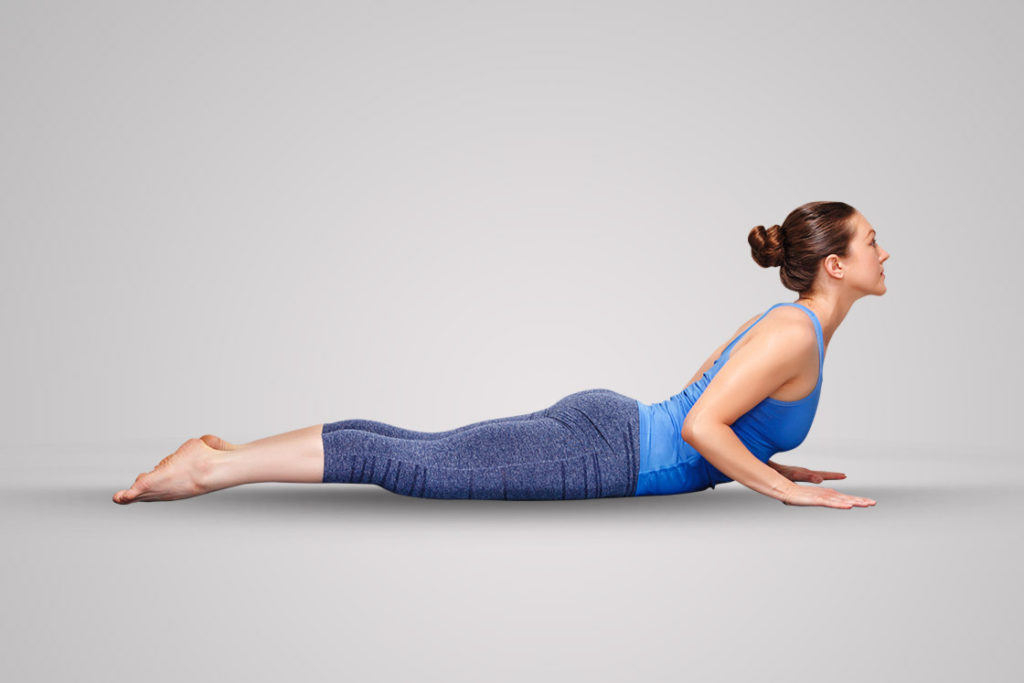
Cobra pose majorly targets the back muscles. It strengthens the spine while opening the chest to the fullest.
Besides spine and chest, it majorly stretches shoulders and abdomen and keeps the hips engaged. Performing pose gives a chance to unwind the muscular stress induced by long hours of desk jobs.
Instructions
- Begin with lying down on the floor keeping the legs together and arms by the sides.
- Bend the elbows to bring the hands forward under the shoulders.
- Pressing the palms on the floor to raise the head and chest off the floor bringing the upper back into a slight backbend.
- Gaze upward stretching the neck to hold the pose for a few breaths.
11. Reclining pigeon pose (Supta Kapotasana)
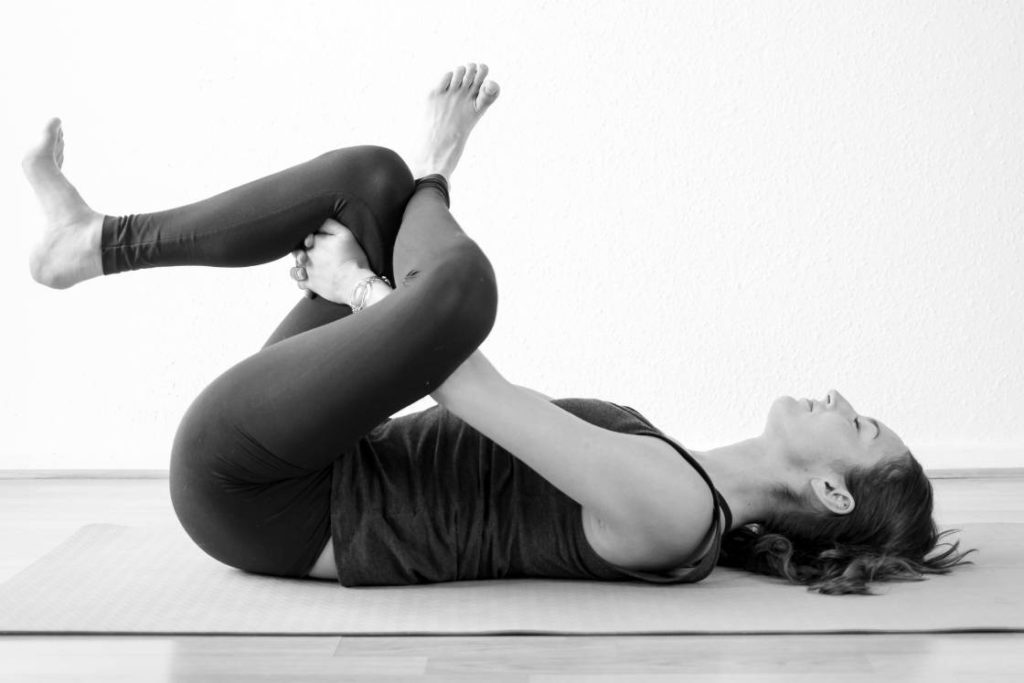
Practicing reclining pigeon pose is an unusual stretch that focuses on the areas that often left unnoticed. By stretching the lower back and outer hips, it serves as an excellent supine-hip opener.
It also stretches the arms, neck, and wrists passively and makes the body flexible enough to perform more intense poses and daily activities. It is a restorative pose that brings relaxation stretching away from the accumulated tension.
Instructions
- Lie on your back bending your knees and placing the feet on the floor.
- Lift your right leg placing the right ankle on top of the left thigh outstretching the right knee outwards.
- Extend your arms to clasp the hands around the left thigh.
- Grasping the left shin with the hands lift the left foot off the floor and bring the left knee towards the chest.
- Keep both the arches active and do not let the sacrum lift off the floor.
- Stay in this pose for 5-10 breaths then release to switch the legs.
Conclusion
Wait no more if you are someone longing for flexibility as this practice guide is all what you need.
Practice all these yoga poses for flexibility without a miss and see the desired results and surprising benefits within your health and fitness.
